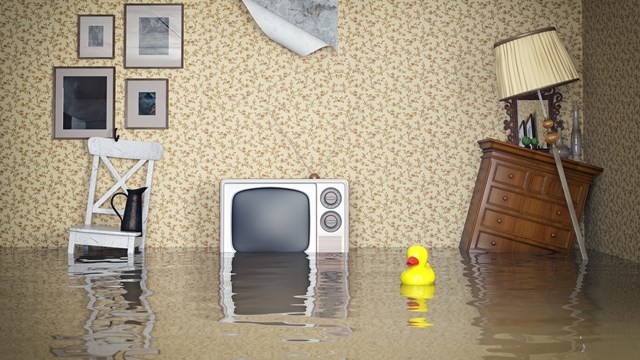
Years ago, when I babysat for a young boy, I watched him create a multi-story building out of empty cardboard boxes. The lad then ran around his proud creation, flexing his muscles and crowing, “My house is indy-structible!” (He then proceeded to crash bodily through the cardboard doors, kick the walls in and lob toys at the roof. It took him a while to destroy his structure, but he enjoyed every second of it.)
Wouldn’t it be great if our co-op or condo building was “indestructible,” too, and could withstand the relentless forces of nature and time without needing constant maintenance and costly repairs? New York City buildings are certainly tougher than my babysitting charge’s cardboard castle, but they’re certainly not indestructible. There are several factors that can cause significant wear and tear on all buildings.
Defending Your Castle
Urban buildings may appear to be solid as rocks, but it’s very important to remember that they’re not static. According to the New York City Landmarks Preservation Commission (LPC), once construction is completed, buildings don’t necessarily stay put.
“Not only does every material wear, but buildings do move,” says John Graham, senior landmarks preservationist with the LPC. “During the life of a structure it will continue to settle and shift. The bedrock is moving. The underlying soil is also being washed away, tunneled through by animals, frozen and thawed, shaken by human forces like traffic and the MTA, and eventually concrete cracks, steel rusts and the building shifts.”
There really isn’t anything that can be done to protect a building from the natural shifts in the earth, or its underlying long-term effects on the structure. There are however other enemies that can cause damage to your building’s shield. Part of any building’s maintenance plan should include protecting it against these enemies, repairing any damage and maintaining the building exterior on a regular basis.
Neglect can lead to worsening conditions and ultimately cause a hefty dent in the building’s bottom line. By maintaining the building, you are actually slowing down its deterioration. It’s important to understand that what kind of damage can occur often depends on what the building is made of. “Stone, brick metal and wood all have drastically different life spans and tolerances,” says Frederick C. Baumert, principal of Keast & Hood Co. Structural Engineers in Philadelphia, a company that has worked on Philadelphia’s historic town hall.
For example, some building materials such as limestone may absorb dirt more than, say, granite or sandstone. However, all experts interviewed for this article agree that all buildings have one common enemy—its kryptonite if you will—and that’s water.
Keep it Weather Tight
“Water will rot or corrode or eat away almost every building material,” says Graham. “And the normal settlement a building goes through allows lots of little cracks where water can get in and cause damage. Keeping a building weather-tight is the first line of defense.”
One harrowing example of water damage occurred years ago in New York City. A commercial building that housed the communications center of the New York City Emergency Medical Service was so badly damaged by underground water leaks that a gas line snapped and ceilings began buckling. According to New York Timesreports, the damage was caused by a break in a nearby water main as well as the shifting of the earth underneath. The building was reported not to be salvageable.
“Water causes steel to rust and expand,” explains Michael Yates, president of Yates Restoration Group Ltd. in the Bronx. “When it expands, it pushes out the masonry. If you permit the water to come in from cracks in the building, it accelerates the damage.”
Baumert also notes that “water also causes wood to decay and brick, stone, and concrete to spall.” Spalling happens when water gets into the micro-cracks, then as it freezes and thaws again, causes deterioration and weathering.
Controlling water damage in multifamily buildings is not only vital to its structural integrity, but it’s vital to the health of the residents and staff. Wet or damp drywall, caulking, grout, wood, or carpet can become moldy. When the mold is disturbed, spores are released into the air. When inhaled, it can cause serious health damage.
There are vapor barriers and sealants that can be used to fill cracks and openings that might allow moisture to enter the building. The Cooperator offers more detailed articles on its website about the process of water prevention.
Pollution and Wind Problems
“Pollution in air and acid rain does result in damage to stone facades,” says Baumert. “Limestone is particularly sensitive to these pollutants and to acids in particular that are carried in the rainwater. It can create a buildup of lime deposits, which, over time, steadily breaks down the integrity of the stone.”
Pollutants are also showered on buildings. “The second-ranked major force is wind,” says Baumert. “There is the obvious pressure and buffeting from the wind, which can be stronger at the top of a building than at the bottom, but also the materials that wind carries can be hazardous. In mild winds, the materials would be dust and dirt (sand-blasting), and water (snow, rain, sleet, hail). In very strong winds, the objects may be much bigger—stones, lumber (and, depending on where you live) the occasional cow,” he joked.
All humor aside, building maintenance is a serious issue. Case in point—there are ideal examples of commercial exteriors and their wear and tear, causing a need for repair. The New York Public Library and, a few years ago, Cornell University announced major repairs to its infrastructure. Last year, the library announced a plan to repair its 96-year-old stone building, which has been the subject of weather and urban pollution. The project will include a complete cleaning of the building’s Vermont marble, repair of almost 3,000 cracks, protection and preservation of the many sculptural elements, and repair of the building’s roof and other interior areas. Cornell University was subject to cracks of the concrete caused by seasonal freezing and thawing of the concrete building. With moisture caught in between the cracks, the damage worsened, leaving the building in serious need of repair.
Fixing It Up
Yates recommends that all buildings have a regular maintenance program instead of waiting until a problem rears its ugly head to bring in a repair company. “Buildings are more likely to have substantial problems over time if they don’t have a normal maintenance program,” says Yates. “When problems first manifest themselves, take care of them. An engineering firm can inspect on a yearly or regular basis and we can put scaffolds up and assist or do remedial repairs.”
Contractors should have the correct insurance and coverage for the work they are performing. “Ensure that contractors are adhering to new safety requirements,” says Yates. “All personnel must be properly certified in suspended or supported scaffold systems.”
In order to be considered safe, your building must comply with New York City Local Law 11, which was signed into law in 1998. This law requires that buildings undergo preventative maintenance inspections on a regular basis and imposed more stringent requirements for repair of deteriorated conditions. Owners of buildings higher than six stories—within the five boroughs—must have the exterior walls and appurtenances inspected by a licensed professional engineer or licensed architect every five years.
Lisa Iannucci is a freelance writer living in Poughkeepsie, New York.






Leave a Comment